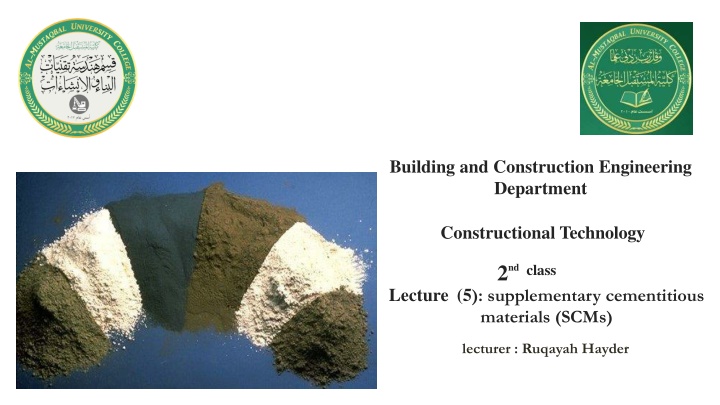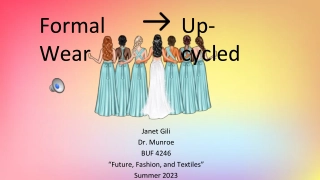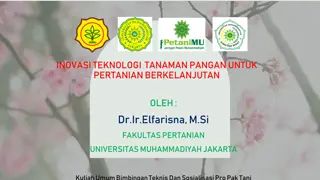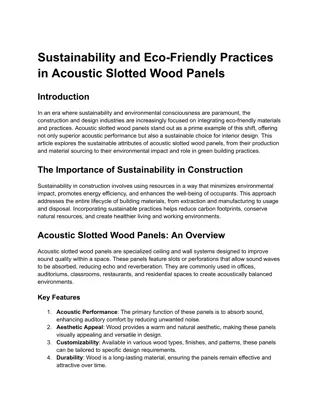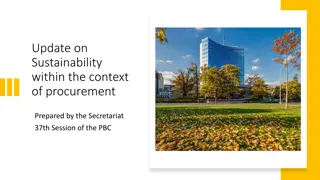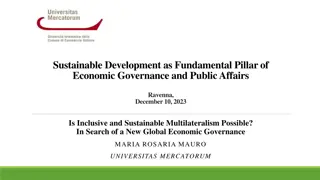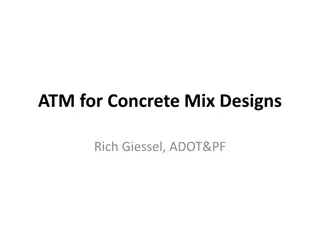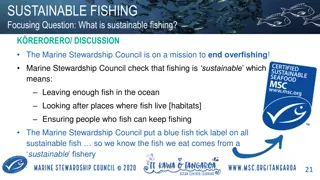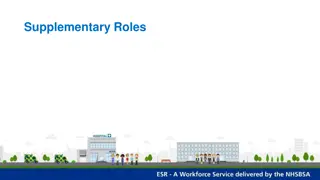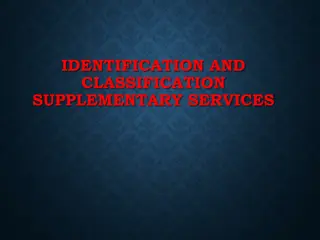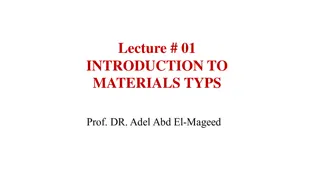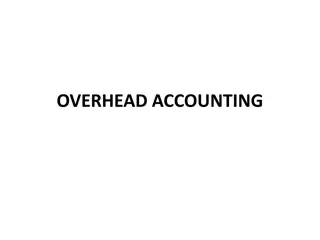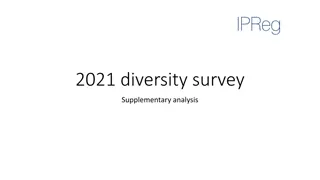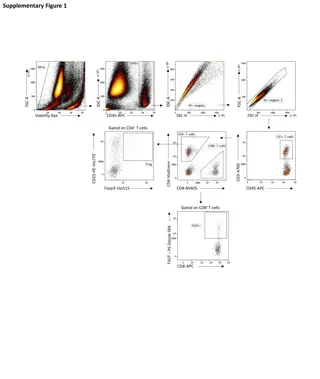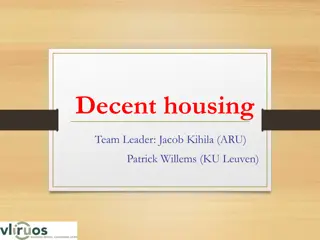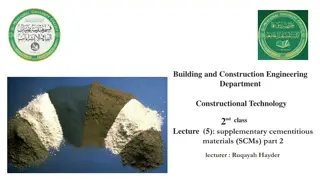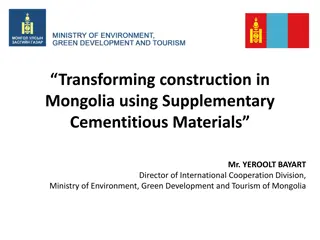Sustainable Building Practices: Using Supplementary Cementitious Materials
Supplementary Cementitious Materials (SCMs) are waste and by-product materials that can be used as full or partial substitutes for cement in concrete production. This practice helps reduce the environmental impact of traditional cement manufacturing processes and improves the overall sustainability of construction projects. Fly ash, a common SCM, is a byproduct of burning coal in power plants and possesses pozzolanic properties, enhancing the strength and workability of concrete mixes. By incorporating SCMs like fly ash, construction industry can reduce energy consumption, greenhouse gas emissions, and reliance on non-renewable resources.
Download Presentation

Please find below an Image/Link to download the presentation.
The content on the website is provided AS IS for your information and personal use only. It may not be sold, licensed, or shared on other websites without obtaining consent from the author.If you encounter any issues during the download, it is possible that the publisher has removed the file from their server.
You are allowed to download the files provided on this website for personal or commercial use, subject to the condition that they are used lawfully. All files are the property of their respective owners.
The content on the website is provided AS IS for your information and personal use only. It may not be sold, licensed, or shared on other websites without obtaining consent from the author.
E N D
Presentation Transcript
Building and Construction Engineering Department Constructional Technology 2 nd class Lecture (5): supplementary cementitious materials (SCMs) lecturer : Ruqayah Hayder
Supplementary cementitious materials (SCMs) Although cement gives outstanding results as binding materials in concrete and mortar, its manufacture always seems to associated with many drawbacks which are the following: o Cement manufacture is an energy intensive as the raw materials should be heated to a temperature higher than 1400 0C resulting in considerable electrical and hydraulic energy consumption; about 5.6 GJ/ton. o Its production process also exhausts substantial amount of non-renewable natural materials (1.5 t limestone and clay per ton of OPC). o cement manufacture emits significant amount of greenhouse gases (0.95 t carbon dioxide per ton of OPC) o Cement industry is responsible about the generation of 7% of the artificial carbon dioxide emission due to carbonate decomposition
Supplementary cementitious materials (SCMs) These problems have been driven to find out less energy intensive and economic materials as full or partial substitution to cement. One of the promising methods is the utilisation of supplementary cementitious materials (SCM). supplementary cementitious materials (SCM) which are waste and by- product materials. Examples of SCMs are: fly ash (FA), ground granulated blast slag (GGBS), pulverised fuel ash (PFA), rice husk ash (RHA), palm oil fly ash (POFA) and cement kiln dust (CKD) These materials react with water to produce pozzolanic and cementitious properties.
Fly ash Fly ash is a fine powder that is a byproduct of burning pulverized coal in electric generation power plants. This residue, known as fly ash, is created when the mineral impurities in the coal fuse together as they come out of the combustion chamber, then cool down and harden. Fly ash is a pozzolan, a substance containing aluminous and siliceous material that forms cement in the presence of water. When mixed with lime and water, fly ash forms a compound similar to Portland cement. This makes fly ash suitable as a prime material in blended cement, When used in concrete mixes, fly ash improves the strength and segregation of the concrete and makes it easier to pump.
Chemical Composition of Fly Ash The chemical composition of fly ash depends upon the type of coal used and the methods used for combustion of coal. Table No 1: Chemical composition of fly ash of different coals.
Types of Fly ash Type of Fly Ash as per IS Codes (IS 3812-1981) A. Grade I This grade of Fly ash is derived from bituminous coal having fractions SiO2+Al2O3+Fe2O3 greater than 70 %. B. Grade II This grade of Fly ash derived from lignite coal having fractions SiO2+Al2O3+Fe2O3 greater than 50 %.
Types of Fly ash Type of Fly Ash as per American Society for Testing and Materials (ASTM C618) Class F and Class C. Both class F and class C fly ash have resistance to expansion. Class F is generally low-calcium and has a carbon content that is usually less than 5 percent. Class C has a higher percentage of calcium oxide than Class F and is more commonly used for structural concrete Class C fly ash is typically composed of high-calcium fly ashes with a carbon content of less than 2 percent.
Types of Fly ash Currently, more than 50 percent of the concrete placed in the U.S. contains fly ash. Class F fly ash is used at dosages of 15 to 25 percent by mass of cementitious material. while Class C fly ash is used at dosages of 15 to 40 percent.
Application for Fly ash Fly ash is the prime material in many cement-based products, such as poured concrete, concrete block, and brick. used in Portland cement concrete pavement or PCC pavement. Fly ash has also been used for embankment and mine fill. Used as a soil stabilization material Used in Roller compacted concrete dams Fly ash is used as component in geoploymers
Benefits of Fly ash Fly ash can be a cost-effective substitute for Portland cement. Fly ash is also recognized as an environmentally friendly material because it is a byproduct and has low embodied energy. Fly ash requires less water than Portland cement. High ultimate strength , Great workability Reduces crack problems, and bleeding reduces corrosion of reinforcing steel improves resistance to chemical attack and mobility through a reduction in permeability. Reduces heat of hydration.
Disadvantages of Fly ash Smaller builders and housing contractors may not be familiar with fly ash products. Slower strength gain Increased need for air-entraining admixtures Increase of salt scaling produced by higher proportions of fly ash
Concrete-Grade Fly Ash Concrete-Grade Fly Ash Concrete-grade fly ash is a supplementary cementitious material that delivers improved later-age strength, workability and enhances the durability properties of concrete. It is commonly used as a 20% 30% cement replacement in concrete. Grade 1 Fly Ash is used as a single product or may be blended to produce a Fly Ash Blended Cement. Grade 1 Fly Ash is recommended for use in virtually all conventional concrete applications.
https://www.thespruce.com/fly-ash-applications-844761 https://theconstructor.org/building/fly-ash-properties-types- mechanism/26654/ https://www.indiamart.com/proddetail/building-with-flyash-bricks- 8394838212.html https://www.mdpi.com/2079-4991/10/3/474/htm https://ars.els-cdn.com/content/image/1-s2.0-S1004954120305267- ga1_lrg.jpg https://www.linkedin.com/pulse/what-fly-ash-deepak-ramamurthy
